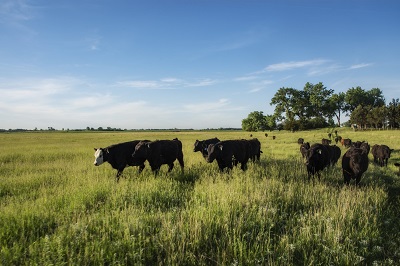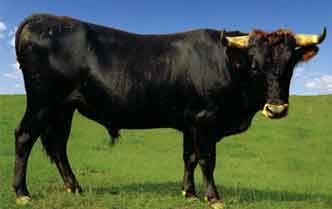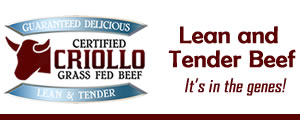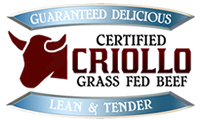The Difference Between Grass Fed and Grain Fed Beef - Go Against the Grain!
There's no denying that grass fed beef tastes completely different than grain fed beef. But there's more to it than taste. Learn about the difference here.
Let’s start with the bad news: that beautifully marbled fatty steak you’ve grown to love actually might not be as good for you, the animal, or the environment as you might have hoped. But the good news is, there’s a healthy and sustainable alternative that is becoming more widely available: grass-fed beef.
So if grass-fed is so much healthier for you and the environment, you may be asking “so, why isn’t all beef in U.S. grass-fed?” Well, farmers that are aiming purely for high yield from cattle turn to corn and soy because it fattens up an animal at a much faster rate. Additionally, feedlots provide a way for a farmer to utilize less space per animal. Simply put, large grass pastures means more expense and more labor.
Still, with the added cost and potential inconvenience of grass-fed beef, more and more farmers are turning to grass-fed over grain-fed. In 2010, there were only around 50 completely grass-fed-cattle operations in the United States. That number has since grown to be in the thousands with a continual 20-30% growth rate.
Here, we’ll explore the major ways that grass-fed beef benefits the environment, the cattle, the farmer, and you.

1. How Grass-Fed Beef Benefits You
The old saying “you are what you eat” could not be more applicable to beef.
Grass-fed cattle are usually free to roam on pasture, eating grass and shrubs that are native to their environment. This not only is beneficial to the environment by pruning plants and spreading seeds, but it’s also beneficial to the cattle as no antibiotics or growth hormones are needed.
It’s also beneficial to the rancher who doesn’t need to worry about the added cost of shipping in grain-feed, and to the consumer who enjoys meat that is higher quality with less fat and more beneficial nutritional compounds.
The way cows are fed has a massive effect on the chemical and nutritional makeup of the beef that they produce, and therefore, what you consume. The beef produced from grass-fed cattle is lower in overall fat and calorie content. The fat that is present has a yellowish appearance, denoting the presence of carotenoids, a healthful compound high in antioxidants that are deposited in fat from plant material being ingested.
Grass-fed beef is lean and tender with a much higher omega-3 and omega-6 fatty acid content per ounce. It is also much higher in vitamins such as Vitamin A and E, which is important for healthy immune function in humans.
Antibiotic use in cattle is a much-debated topic in recent years and studies are showing it’s negative health effects on humans that consume beef treated with it. Grass-fed beef ensures the health of the animal, since they are eating their natural diet, and antibiotics for issues like inflammation and abscesses from eating grain are not needed.
2. How Grass-Fed Beef Benefits the Earth
Let’s start at the beginning. Typically, calves start out on their mother’s milk and are free to roam in their environments, eating grass and other shrubs available to them until around 7 months of age. At this point, conventionally raised cattle are then moved to feedlots, known as Concentrated Animal Feeding Operations (CAFOs), where they eat a diet of primarily two things: corn and soy.
This grain feed has to be trucked in from elsewhere, commonly at very long distances, contributing to greenhouse gases in the atmosphere. This mono-diet of grain ensures the cows will fatten up very quickly but can lead to a number of health problems that have to be controlled with antibiotics.
On the other hand, the foraging that occurs when raising grass-fed cattle actually benefits the environment in several ways. Foraging livestock helps to maintain native grasslands and return overgrazed or unhealthy land back to a healthy state.
Now, let’s talk about poop. As much as we would like to avoid the subject when talking about the foods we eat, manure from cattle is an important fertilizer to maintain proper nitrogen content for healthy soil that can adequately support vegetation.
When cattle eat a lot of plant material, the quality of their manure as fertilizer increases and the natural cycle is restored. A properly maintained pasture where cattle are rotated properly will promote biodiversity, control weeds, and will ensure the grass growing back is nutritious and has high mineral content.
3. How Grass-Fed Beef Benefits the Cattle + the Farmer
Cows need antibiotics and growth stimulants when fed supplemental feed such as wheat and corn. This comes as an added cost to the farmer. Additionally, the fuel prices to transport the soy and corn long distances will ultimately cut down on the rancher’s profit.
The resulting meat will have more fat that needs to be trimmed away and will yield sub-par quality meat for the customer and less yield for the rancher per animal.
While raising grass-fed beef can be more expensive for the farmer initially, it also fetches a higher price per pound that an increasing sector of the market is willing to pay for (20-60% more).
Grass-fed farmers are also insulated from spikes in price for grain feed or fertilizer since they rely entirely on the health of their own pastures and their built-in fertilizer system.
From a purely ethical standpoint, many concerned consumers argue that the quality of life for cattle in a feedlot is significantly lower than that of cattle free to roam on a natural, grass-fed diet. This is due to cramming and eating an unnatural diet that fattens them up too quickly and leads to a number of health problems. The cattle in a feedlot are not allowed to roam and graze as they naturally would, leading to poor quality of life.
Final Thoughts
Grass-fed beef, while it may be higher in price for the consumer and more labor-intensive for the farmer, has benefits that far outweigh the drawbacks. Many argue that we should ideally be eating less meat that is better quality and more expensive to benefit the earth and benefit the animals we raise. Not only is grass-fed beef better for your health, but it’s also better for everyone.
Contact us for more info and check out our top quality grass-fed Criollo beef.








